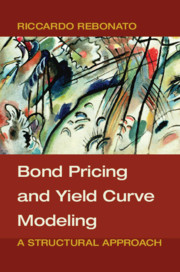Book contents
- Frontmatter
- Dedication
- Contents
- Acknowledgements
- Symbols and Abbreviations
- Part I The Foundations
- Part II The Building Blocks: A First Look
- Part III The Conditions of No-Arbitrage
- Part IV Solving the Models
- Part V The Value of Convexity
- Part VI Excess Returns
- Part VII What the Models Tell Us
- 30 The Doubly Mean-Reverting Vasicek Model
- 31 Real Yields, Nominal Yields and Inflation: The D'Amico–Kim–Wei Model
- 32 From Snapshots to Structural Models: The Diebold–Rudebusch Approach
- 33 Principal Components as State Variables of Affine Models: The PCA Affine Approach
- 34 Generalizations: The Adrian–Crump–Moench Model
- 35 An Affine, Stochastic-Market-Price-of-Risk Model
- 36 Conclusions
- References
- Index
36 - Conclusions
from Part VII - What the Models Tell Us
Published online by Cambridge University Press: 25 May 2018
- Frontmatter
- Dedication
- Contents
- Acknowledgements
- Symbols and Abbreviations
- Part I The Foundations
- Part II The Building Blocks: A First Look
- Part III The Conditions of No-Arbitrage
- Part IV Solving the Models
- Part V The Value of Convexity
- Part VI Excess Returns
- Part VII What the Models Tell Us
- 30 The Doubly Mean-Reverting Vasicek Model
- 31 Real Yields, Nominal Yields and Inflation: The D'Amico–Kim–Wei Model
- 32 From Snapshots to Structural Models: The Diebold–Rudebusch Approach
- 33 Principal Components as State Variables of Affine Models: The PCA Affine Approach
- 34 Generalizations: The Adrian–Crump–Moench Model
- 35 An Affine, Stochastic-Market-Price-of-Risk Model
- 36 Conclusions
- References
- Index
Summary
If all we ever did was wind and unwind the tangled threads of learning without ever getting any further – then what an unhappy fate we would have!
HerderThe men of experiment are like the ant, they only collect and use; the reasoners resemble spiders, who make cobwebs out of their own substance. But the bee takes a middle course: it gathers its material from the flowers of the garden and of the field, but transforms and digests it by a power of its own. Not unlike this is the true business of philosophy.
Sir Francis Bacon, Novum OrganonComputers are useless. They only give us answers.
PicassoWHAT HAVE WE LEARNT?
The Road Followed
By the end of a book, the writer is pretty tired, and the reader rarely feels much perkier. Therefore I will try to keep these concluding remarks short, sweet and to the point.
We have looked at affine yield curve modelling from a structural perspective. We started from a really beautiful and simple model (the Vasicek model), that we liberally employed to build our intuition about the workings of more complex affine models. We examined carefully up to which point this entry-level approach could take us in our structural understanding.
Alas, when we looked at the recent empirical information about excess returns and term premia, we concluded that, for all its elegance and beauty, we had to graft a pretty substantial extension onto the Vasicek structure. Above all, we decided that for a model to be worth its predictive salt it would have to have a non-constant market price of risk. More precisely, as a bare minimum, the market price of risk would have to be state-dependent, and would have to capture the dependence of the expected excess returns on the slope of the yield curve (and perhaps on more exotic return-predicting factors).
We therefore gathered the tools to analyze, and perhaps even build, new models that could incorporate this evidence. We clambered with greater determination than elegance over the analytical and notational difficulties of the more modern approaches, and we compared their predictions about term premia and rate expectations with what has been found empirically in the last 10-or-so years. What did we find?
- Type
- Chapter
- Information
- Bond Pricing and Yield Curve ModelingA Structural Approach, pp. 714 - 724Publisher: Cambridge University PressPrint publication year: 2018

